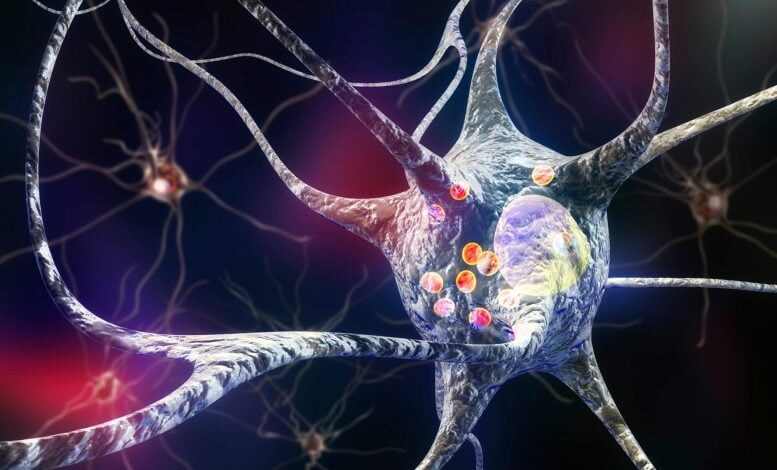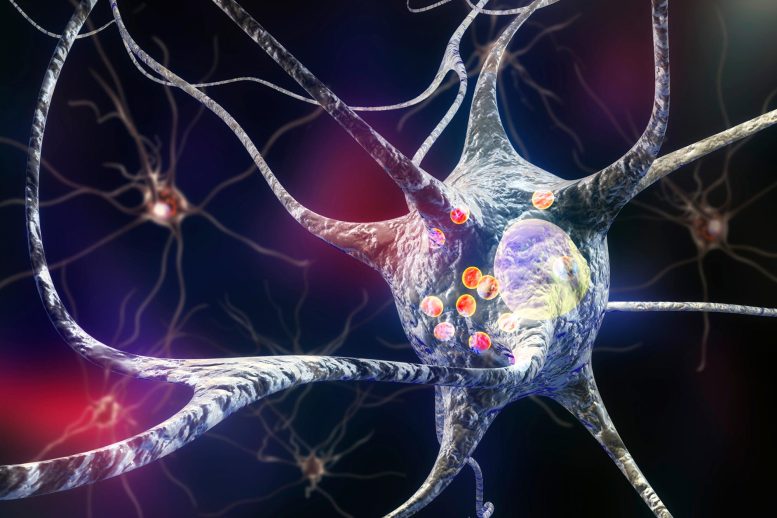New AI-Based Blood Test Can Predict Parkinson’s Disease Seven Years Before Symptoms


Researchers at UCL and University Medical Center Goettingen have created an AI-based blood test that predicts Parkinson’s disease up to seven years before symptoms start, using eight biomarkers. This breakthrough, published in Nature Communications, offers hope for early diagnosis and treatment, aiming to protect brain cells before they are damaged.
A new AI-enhanced blood test can predict Parkinson’s disease up to seven years in advance by analyzing specific biomarkers, potentially enabling earlier and more effective treatments.
A team of researchers, led by scientists from the University College of London (UCL) and the University Medical Center Goettingen, has developed a simple blood test that employs artificial intelligence (AI) to predict Parkinson’s disease up to seven years before symptoms appear.
Parkinson’s disease is the world’s fastest-growing neurodegenerative disorder and currently affects nearly 10 million people across the globe.
The condition is a progressive disorder that is caused by the death of nerve cells in the part of the brain called the substantia nigra, which controls movement. These nerve cells die or become impaired, losing the ability to produce an important chemical called dopamine, due to the build-up of a protein alpha-synuclein.
Early Detection and Treatment
Currently, people with Parkinson’s are treated with dopamine replacement therapy after they have already developed symptoms, such as tremor, slowness of movement and gait, and memory problems. But researchers believe that early prediction and diagnosis would be valuable for finding treatments that could slow or stop Parkinson’s by protecting the dopamine-producing brain cells.
Senior author, Professor Kevin Mills (UCL Great Ormond Street Institute of Child Health), said: “As new therapies become available to treat Parkinson’s, we need to diagnose patients before they have developed the symptoms. We cannot regrow our brain cells and therefore we need to protect those that we have.
“At present we are shutting the stable door after the horse has bolted and we need to start experimental treatments before patients develop symptoms. Therefore, we set out to use state-of-the-art technology to find new and better biomarkers for Parkinson’s disease and develop them into a test that we can translate into any large NHS laboratory. With sufficient funding, we hope that this may be possible within two years.”
The research, published in Nature Communications, found that when a branch of AI called machine learning, analyzed a panel of eight blood-based biomarkers whose concentrations are altered in patients with Parkinson’s, it could provide a diagnosis with 100% accuracy.
The team then experimented to see whether the test could predict the likelihood that a person would go on to develop Parkinson’s.
They did this by analyzing blood from 72 patients with Rapid Eye Movement Behaviour Disorder (iRBD). This disorder results in patients physically acting out their dreams without knowing it (having vivid or violent dreams). It is now known that about 75-80% of these people with iRBD will go on to develop a synucleinopathy (a type of brain disorder caused by the abnormal buildup of a protein called alpha-synuclein in brain cells) – including Parkinson’s.
When the machine learning tool analyzed the blood of these patients it identified that 79% of the iRBD patients had the same profile as someone with Parkinson’s.
Long-term Study and Future Prospects
The patients were followed up over the course of ten years and the AI predictions have so far matched the clinical conversion rate – with the team correctly predicting 16 patients as going on to develop Parkinson’s and being able to do this up to seven years before the onset of any symptoms. The team are now continuing to follow up on those predicted to develop Parkinson’s, to further verify the accuracy of the test.
Co-first-author Dr Michael Bartl (University Medical Center Goettingen and Paracelsus-Elena-Klinik Kassel) who conducted the research from the clinical side alongside Dr Jenny Hällqvist (UCL Queen Square Institute of Neurology and National Hospital for Neurology & Neurosurgery), said: “By determining 8 proteins in the blood, we can identify potential Parkinson’s patients several years in advance. This means that drug therapies could potentially be given at an earlier stage, which could possibly slow down disease progression or even prevent it from occurring.
“We have not only developed a test, but can diagnose the disease based on markers that are directly linked to processes such as inflammation and degradation of non-functional proteins. So these markers represent possible targets for new drug treatments.”
Co-author, Professor Kailash Bhatia (UCL Queen Square Institute of Neurology and National Hospital for Neurology & Neurosurgery) and his team are currently examining the test’s accuracy by analyzing samples from those in the population who are at high risk of developing Parkinson’s, for example, those with mutations in particular genes such as ‘LRRK2’ or ‘GBA’ that cause Gaucher disease.
The team is also hoping to secure funding to create a simpler blood spot test where a drop of blood can be spotted on a card and posted to the lab to investigate if it can predict Parkinson’s disease even earlier than the seven years before the onset of symptoms in this study.
The research was funded by an EU Horizon 2020 grant, Parkinson’s UK, the National Institute for Health and Care Research GOSH Biomedical Research Centre (NIHR GOSH BRC), and the Szeben-Peto Foundation.
Professor David Dexter, Director of Research at Parkinson’s UK, said: “This research, co-funded by Parkinson’s UK, represents a major step forward in the search for a definitive and patient-friendly diagnostic test for Parkinson’s. Finding biological markers that can be identified and measured in the blood is much less invasive than a lumbar puncture, which is being used more and more in clinical research.
“With more work, it may be possible that this blood-based test could distinguish between Parkinson’s and other conditions that have some early similarities, such as Multiple Systems Atrophy or Dementia with Lewy Bodies.
“The findings add to an exciting flurry of recent activity towards finding a simple way to test for and measure Parkinson’s.”
Reference: “Plasma proteomics identify biomarkers predicting Parkinson’s disease up to 7 years before symptom onset” by Jenny Hällqvist, Michael Bartl, Mohammed Dakna, Sebastian Schade, Paolo Garagnani, Maria-Giulia Bacalini, Chiara Pirazzini, Kailash Bhatia, Sebastian Schreglmann, Mary Xylaki, Sandrina Weber, Marielle Ernst, Maria-Lucia Muntean, Friederike Sixel-Döring, Claudio Franceschi, Ivan Doykov, Justyna Śpiewak, Héloїse Vinette, Claudia Trenkwalder, Wendy E. Heywood, Kevin Mills and Brit Mollenhauer, 18 June 2024, Nature Communications.
DOI: 10.1038/s41467-024-48961-3

